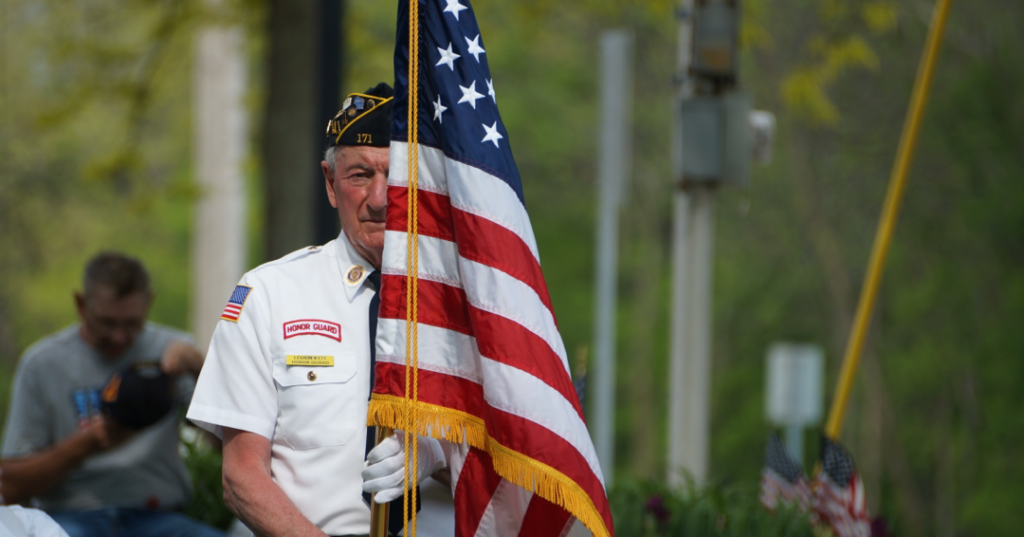Veterans Financial Assistance 101
The application process for the Aid and Attendance pension can be completed in three steps. Gather documents, complete the necessary VA forms, and mail the completed application.

Did you know that Veterans Affairs provides a monthly pension for Veterans or Surviving Spouses of Veterans towards Assisted Living or Home Health Care?
If you want to learn more about how to pay for senior living read my post here.
What are Aid and Attendance Benefits?
Aid and Attendance benefits are financial compensation to qualified veterans and their spouses in addition to their standard VA pension benefits.
These benefits are designed to help veterans who need financial assistance and cover both in-home and facility care costs.
When applying for Aid and Attendance, it is enormously important for a doctor to diagnosis your loved one correctly and really understand his or her needs.
The doctor must state that your loved one does and should require ADL assistance from the Assisted Living Facility or the individual at home.
They must be specific with the names and the doctor’s statement must match the Care Expense Statement, which is completed by the caregiver or community.
How Much are Aid and Attendance Benefits for Veterans?

Veterans Financial Assistance: 2019 Maximum Annual Pension Rates
Veteran
(One Dependent) = $2,230 / Month…………..$26,760 /
Annually
Veteran (No Dependents) = $1,881 /
Month…………..$22,572 / Annually
Two Married Wartime Vets = $2,984 / Month…………..$35, 808 /
Annually
Healthy Vet + Sick Spouse = $1,477 / Month…………..$17,724
/ Annually
Widow of Veteran =
$1,210
/ Month…………..$14,520 / Annually

The veteran or widow must be receiving assistance in at least two of these areas:
Activities of Daily Living (ADL) or Independent Activities of Daily Living (IADL)
(ADL’s)
Toileting
Bathing
Showering
Personal Hygiene
Dressing
Ambulation
Nursing Services
IADL’s May Include, But Are Not Limited To
House Cleaning Laundry Services
Meal Preparation Yardwork
Medicine Management Transportation
Other ways to qualify for Aid & Attendance may include situations where:
The individual is bedridden.
The individual is a patient in a nursing home due to mental or physical incapacity.
The individual is legally blind.
The Individual has a diagnosis of dementia or Alzheimer’s disease.

Defining a wartime veteran or surviving spouse
The veteran must have served at least 90 consecutive days of active duty.
One of those days needed to be during a period of war.
The veteran must have received a discharge other than “dishonorable.”
(If a spouse) The widowed spouse must have been married to the veteran at the time of passing.
The widowed spouse must have never remarried.
Wartime Periods
Mexican Border Period (May 9, 1916 – April 5, 1917)
World War I (April 6, 1917 – November 11, 1918)
World War II (December 7, 1941 – December 31, 1946)
Korean Conflict (June 27, 1950 – January 31, 1955)
Vietnam (In Country) (February 28, 1961 – August 4, 1964)
Vietnam (All) (August 5, 1964 – May 7, 1975)
Gulf War (August 2, 1990 – through a future date)
*This application will require a medical evaluation from a physician for veterans’ financial assistance.
*Gross income, assets, and unreimbursed medical expenses will also be taken into consideration for veterans’ financial assistance.
Questions to think about when helping your loved one apply for Aid and Attendance through Veterans Affairs.
1.Does your loved one need or require bathing assistance?
2. Does your loved one need or receive assistance with routine housekeeping and laundering?
3. Does your loved one need or require assistance with toileting?
4. Can your loved one comfortably afford care?
5. Is your loved one still driving?
6. Is your loved one using a rollator/walker or wheelchair?
7. Does your loved one have dementia or Alzheimer’s?
8. Does your loved one need help to handle his or her financial affairs?
9. Can your loved one manage his or her own medicine safely and properly?
10. Is your loved one bedridden? (Unable to transfer from the bed to a wheelchair)
11.Is your loved one legally blind?
12. What is the potential monthly cost of the senior living community?
13. What is the potential monthly cost of in-home private duty care?
14. What is the potential monthly cost of the family providing care?
15. What is the cost of Medicare premiums and supplemental insurance costs?
16. What is the cost of additional monthly expenses?
17. Was your loved one a wartime veteran? (90 Consecutive days active duty – 1 day during wartime?
18. Ask your loved one which war did the veteran serve in?
19. Ask your loved one if they have their DD214 or Military Discharge Papers?
20. Did your loved one receive an honorable discharge?
21. Ask your loved one about their monthly gross social security benefit?
22. Ask your loved one about their monthly pension?
23. Ask your loved one about any other sources of monthly income?
24. Ask your loved one about the money in their checking account, savings account, money market account, stocks, bonds, mutual funds, annuities, certificate of deposits, IRA’s, and any other liquid assets?
25. Ask your loved one about the value of their home and the cost of their mortgage? Do they have plans to sell their home?
Application Process
You must complete the application, available online. You can download here:
It is so important that you obtain copies of other information as well:
Income statements, pension statements, and any other income (interest on annuities, rental income, etc.).
Latest bank statements from all financial institutions
Retirement account statements
Life insurance policies
Marriage licenses or death certificates
All other medical expenses such as home health care, assisted living, and skilled nursing facility
Military discharge papers (DD 214)
Birth certificate
Click here to visit the VA Pension Center
I hope this information was helpful to discover the untapped veterans’ financial assistance program through veterans’ affairs. If you liked this post, you will enjoy, Paying for Senior Living: What you need to know?.
XOXO
Mackenzie
